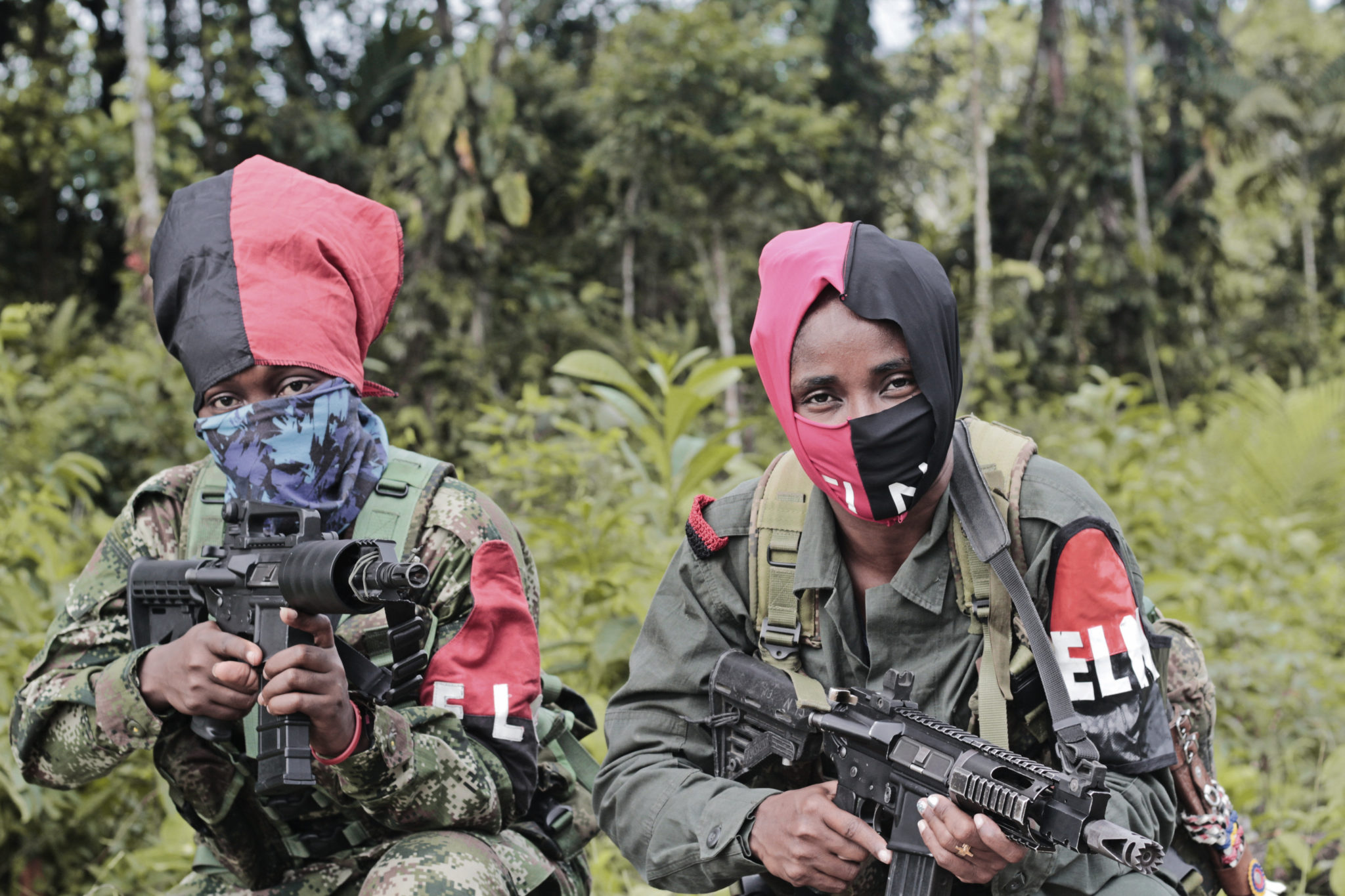
Members of Colombia’s National Liberation Army, which operates along the border area between Colombia and Venezuela, pose with their weapons.
“Very early in 2022, the horror of the war showed its face again in Arauca, where not only have the effects of peace with the FARC not been seen, but, on the contrary, violence has reached levels of the crudest stages of the armed conflict.”
The border region between Colombia and Venezuela is experiencing some of its worst violence in years. Since 2 January 2022, several dozen have died in what could be a series of contract killings, according to center-left Colombian daily El Espectador. The daily states that originally, Colombian prosecutors suspected the dead were members of the Revolutionary Armed Forces of Colombia (FARC), a guerrilla group operating along the border, contesting territory with the National Liberation Army (ELN), another prominent guerrilla group. According to an article in the politically centrist Colombian daily El Tiempo, Colombian President Iván Duque has increased the troop presence in the border region to combat drug trafficking and establish greater state presence in these remote stretches.
Violence along the border between Colombia and Venezuela is certainly nothing new. However, this flare-up is a reminder of the criminal sanctuary provided to Colombia’s FARC and ELN by the Maduro regime in Venezuela, and the instability fomented throughout Latin America by the actions of these groups. Unlike previous flare-ups in Apure state in Venezuela, these incidents have not led to migratory flows but underscore that Colombia has yet to realize fully the fruits of its demobilization efforts with guerrilla groups. Lastly, with Colombia’s presidential election slated for May 2022, guerrilla groups and demobilization efforts will be key issues in the campaign.
Source:
“No hubo Combate:” Fiscalía elevó a 27 los muertos en Arauca y dio nueva hipótesis (There was no combat:” Prosecutor’s Office raised the dead in Arauca to 27 and gave a new hypothesis),” El Espectador (Colombian daily generally considered to be center-left in its political orientation), 5 January 2022. https://www.elespectador.com/judicial/no-hubo-combate-fiscalia-elevo-a-27-los-muertos-en-arauca-y-dio-nueva-hipotesis/
Since January 2, 27 dead have been found in different rural areas of Arauca, the Prosecutor’s Office reported on Wednesday. The attorney general, Francisco Barbosa, provided a new hypothesis based on what investigators have found in the field and in the autopsies of the deceased: apparently, there were no combats, but the people were murdered in the form of contract killers.
Source: “Muerte en la frontera (Death on the Border),” El Tiempo (one of Colombia’s oldest dailies generally described as politically-centrist), 4 January 2022. https://www.eltiempo.com/opinion/editorial/muerte-en-la-frontera-editorial-el-tiempo-643053
Early in 2022, the horror of the war showed its face again in Arauca, where not only have the effects of peace with the FARC not been seen, but, on the contrary, violence has reached levels of the crudest stages of the armed conflict…All this within the framework of the complicity, when not open participation in the crime, of the authorities of the Nicolás Maduro regime…Understanding the challenge posed by the natural conditions of the border and the lack of collaboration from the authorities on the other side to curb crime, it is clear that more efficient efforts and strategies are still needed.
Image Information:
Image: Members of Colombia’s National Liberation Army, which operates along the border area between Colombia and Venezuela, pose with their weapons.
Source: https://www.flickr.com/photos/brasildefato/32317009638
Attribution: Flickr
